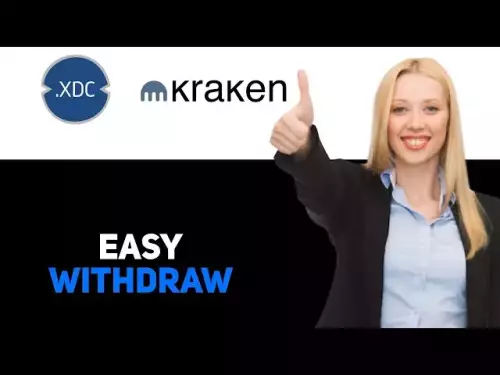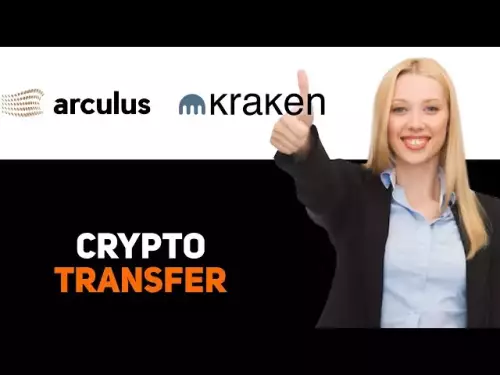-
 bitcoin
bitcoin $114684.631706 USD
-0.87% -
 ethereum
ethereum $4228.677447 USD
1.58% -
 bnb
bnb $1294.880693 USD
-1.16% -
 tether
tether $1.000819 USD
-0.02% -
 xrp
xrp $2.605138 USD
2.79% -
 solana
solana $209.908690 USD
5.89% -
 usd-coin
usd-coin $0.999903 USD
-0.03% -
 dogecoin
dogecoin $0.213423 USD
2.93% -
 tron
tron $0.322721 USD
-0.10% -
 cardano
cardano $0.727247 USD
3.66% -
 hyperliquid
hyperliquid $42.339456 USD
6.05% -
 chainlink
chainlink $19.910811 USD
5.16% -
 ethena-usde
ethena-usde $1.000557 USD
0.00% -
 stellar
stellar $0.349734 USD
2.69% -
 bitcoin-cash
bitcoin-cash $543.848687 USD
-0.21%
Is it cost-effective to hold UNI for a long time? What factors need to be considered
Holding UNI long-term involves assessing market performance, liquidity, tokenomics, regulatory risks, community support, and potential use cases for cost-effectiveness.
Apr 30, 2025 at 04:35 pm

When considering whether it is cost-effective to hold UNI, the native token of Uniswap, for a long time, several key factors come into play. These factors can significantly influence the potential returns and risks associated with holding UNI. Let's delve into these considerations in detail.
Understanding UNI and Its Role in Uniswap
UNI is the governance token of Uniswap, a decentralized exchange (DEX) built on the Ethereum blockchain. Uniswap allows users to swap various cryptocurrencies without the need for a centralized intermediary. As a governance token, UNI holders can vote on proposals that affect the development and operation of the Uniswap protocol. This governance role can potentially influence the token's value, as decisions made by the community can impact the platform's attractiveness and functionality.
Market Performance and Historical Data
To assess the cost-effectiveness of holding UNI over the long term, it's essential to look at its market performance and historical data. Since its launch, UNI has experienced significant volatility, which is typical for many cryptocurrencies. Analyzing the token's price movements over time can provide insights into its potential as a long-term investment. For instance, examining periods of high growth and decline can help investors understand the token's resilience and potential for recovery.
Liquidity and Trading Volume
Liquidity and trading volume are crucial factors to consider when evaluating the cost-effectiveness of holding UNI. High liquidity and trading volume generally indicate a healthy market with a strong interest from traders and investors. This can lead to more stable price movements and easier entry and exit points for investors. Conversely, low liquidity can result in higher volatility and potential difficulties in selling large amounts of UNI without significantly impacting the market price.
Tokenomics and Supply Dynamics
Understanding UNI's tokenomics and supply dynamics is vital for long-term holders. UNI has a fixed total supply of 1 billion tokens, with a portion allocated to various stakeholders, including the Uniswap team, investors, and the community. The distribution of these tokens and any future plans for token issuance or burning can affect the token's value. For instance, if the Uniswap community decides to implement a token burn mechanism, it could potentially increase the value of existing tokens by reducing the overall supply.
Regulatory Environment and Legal Risks
The regulatory environment and legal risks associated with cryptocurrencies can significantly impact the cost-effectiveness of holding UNI. As governments and regulatory bodies around the world continue to develop and enforce regulations related to cryptocurrencies, these changes can affect the operation of decentralized exchanges like Uniswap and the value of their tokens. Investors should stay informed about regulatory developments that could impact UNI and the broader crypto market.
Community and Developer Support
The strength and activity of Uniswap's community and developer support are important factors to consider. A vibrant and engaged community can drive the development of new features and improvements to the platform, potentially increasing the value of UNI. Additionally, strong developer support can lead to better security and functionality, which are crucial for maintaining user trust and platform growth.
Integration and Partnerships
Integration and partnerships with other platforms and services can also influence the cost-effectiveness of holding UNI. Uniswap's ability to integrate with other decentralized finance (DeFi) protocols and form strategic partnerships can enhance its utility and attractiveness to users. These integrations can lead to increased adoption and demand for UNI, potentially driving up its value.
Risk Management and Diversification
When considering holding UNI for the long term, risk management and diversification are essential. Cryptocurrencies are inherently volatile, and holding a single asset like UNI can expose investors to significant risk. Diversifying a crypto portfolio by including a mix of different assets can help mitigate these risks. Additionally, setting clear investment goals and risk tolerance levels can guide decisions about how much UNI to hold and for how long.
Potential Use Cases and Adoption
Finally, the potential use cases and adoption of UNI and the Uniswap platform are critical factors to consider. As more users and developers adopt Uniswap for trading and liquidity provision, the demand for UNI may increase. Additionally, the token's utility in governance and potential future use cases, such as staking or earning rewards, can enhance its value proposition for long-term holders.
Frequently Asked QuestionsQ: How does the governance role of UNI affect its value?
A: The governance role of UNI allows token holders to vote on proposals that can impact the development and operation of Uniswap. Decisions made by the community can influence the platform's attractiveness and functionality, which in turn can affect the demand and value of UNI. For example, if the community votes to implement features that enhance user experience or increase security, it could lead to greater adoption and higher token value.
Q: What are the risks associated with holding UNI for the long term?A: Holding UNI for the long term comes with several risks, including market volatility, regulatory changes, and potential security vulnerabilities in the Uniswap platform. Additionally, the token's value can be affected by broader market trends and the performance of the Ethereum blockchain, on which Uniswap operates. Investors should be aware of these risks and consider them when making investment decisions.
Q: How can I stay informed about developments related to UNI and Uniswap?A: To stay informed about developments related to UNI and Uniswap, you can follow official Uniswap channels on social media, subscribe to their newsletter, and participate in community forums and discussions. Additionally, keeping an eye on reputable crypto news sources and joining relevant Telegram or Discord groups can provide timely updates and insights into the platform's progress and any upcoming changes.
Q: Can I earn rewards by holding UNI?A: While UNI itself does not currently offer staking rewards, holding UNI allows you to participate in governance and vote on proposals. Additionally, some DeFi platforms may offer yield farming opportunities where you can earn rewards by providing liquidity to Uniswap pools. However, these opportunities come with their own risks and should be carefully evaluated before participating.
Disclaimer:info@kdj.com
The information provided is not trading advice. kdj.com does not assume any responsibility for any investments made based on the information provided in this article. Cryptocurrencies are highly volatile and it is highly recommended that you invest with caution after thorough research!
If you believe that the content used on this website infringes your copyright, please contact us immediately (info@kdj.com) and we will delete it promptly.
- XRP Price Prediction: Weekend Rollercoaster or Rally?
- 2025-10-12 08:45:16
- Bittensor (TAO): Super Bullish Signals Point to Potential 2x Rally
- 2025-10-11 10:25:12
- Silver Price Correction: Navigating the Dip & Identifying Key SEO Keywords
- 2025-10-11 10:25:12
- Decoding Crypto Trends: Bittensor's Bull Run, Cardano's Dip, and LivLive's Presale Buzz in 'Uptober 2025'
- 2025-10-12 08:45:16
- MoonBull: The Crypto Meme Coin Promising 1000x Gains?
- 2025-10-11 10:30:01
- Crypto Payroll Revolution: Stablecoins, Altcoins, and the Future of Salary Payments
- 2025-10-11 10:30:01
Related knowledge

Practical parameter settings for a Bitcoin multi-timeframe moving average system
Sep 18,2025 at 10:54pm
Optimizing Timeframe Combinations for Bitcoin Trading1. Selecting appropriate timeframes is crucial when building a multi-timeframe moving average sys...

How can I filter out false breakouts in Dogecoin high-frequency trading?
Sep 22,2025 at 01:00am
Understanding False Breakouts in Dogecoin Trading1. A false breakout occurs when Dogecoin's price appears to move beyond a defined support or resistan...

Techniques for identifying tops and bottoms in the Bitcoin on-chain NVT model
Sep 20,2025 at 07:54pm
Understanding the NVT Model in Bitcoin Analysis1. The Network Value to Transactions (NVT) ratio is often described as the 'P/E ratio' of the cryptocur...

What does the surge in open interest in Bitcoincoin futures mean?
Sep 20,2025 at 11:18pm
Understanding the Surge in Dogecoin Futures Open Interest1. A surge in open interest within Dogecoin futures indicates a growing number of active cont...

How can I use the Ethereum USDT premium to gauge market sentiment?
Sep 18,2025 at 11:55pm
Understanding the Ethereum USDT Premium1. The Ethereum USDT premium refers to the price difference between USDT (Tether) traded on Ethereum-based plat...

What should I do if Ethereum staking yields decline?
Sep 20,2025 at 06:18am
Understanding the Causes Behind Declining Ethereum Staking Yields1. The Ethereum network transitioned to a proof-of-stake consensus mechanism with the...

Practical parameter settings for a Bitcoin multi-timeframe moving average system
Sep 18,2025 at 10:54pm
Optimizing Timeframe Combinations for Bitcoin Trading1. Selecting appropriate timeframes is crucial when building a multi-timeframe moving average sys...

How can I filter out false breakouts in Dogecoin high-frequency trading?
Sep 22,2025 at 01:00am
Understanding False Breakouts in Dogecoin Trading1. A false breakout occurs when Dogecoin's price appears to move beyond a defined support or resistan...

Techniques for identifying tops and bottoms in the Bitcoin on-chain NVT model
Sep 20,2025 at 07:54pm
Understanding the NVT Model in Bitcoin Analysis1. The Network Value to Transactions (NVT) ratio is often described as the 'P/E ratio' of the cryptocur...

What does the surge in open interest in Bitcoincoin futures mean?
Sep 20,2025 at 11:18pm
Understanding the Surge in Dogecoin Futures Open Interest1. A surge in open interest within Dogecoin futures indicates a growing number of active cont...

How can I use the Ethereum USDT premium to gauge market sentiment?
Sep 18,2025 at 11:55pm
Understanding the Ethereum USDT Premium1. The Ethereum USDT premium refers to the price difference between USDT (Tether) traded on Ethereum-based plat...

What should I do if Ethereum staking yields decline?
Sep 20,2025 at 06:18am
Understanding the Causes Behind Declining Ethereum Staking Yields1. The Ethereum network transitioned to a proof-of-stake consensus mechanism with the...
See all articles

























![[4K 60fps] Prisma by novichokk (1 Coin) [4K 60fps] Prisma by novichokk (1 Coin)](/uploads/2025/10/14/cryptocurrencies-news/videos/k-fps-prisma-novichokk-coin/68ee49804ba00_image_500_375.webp)
















































